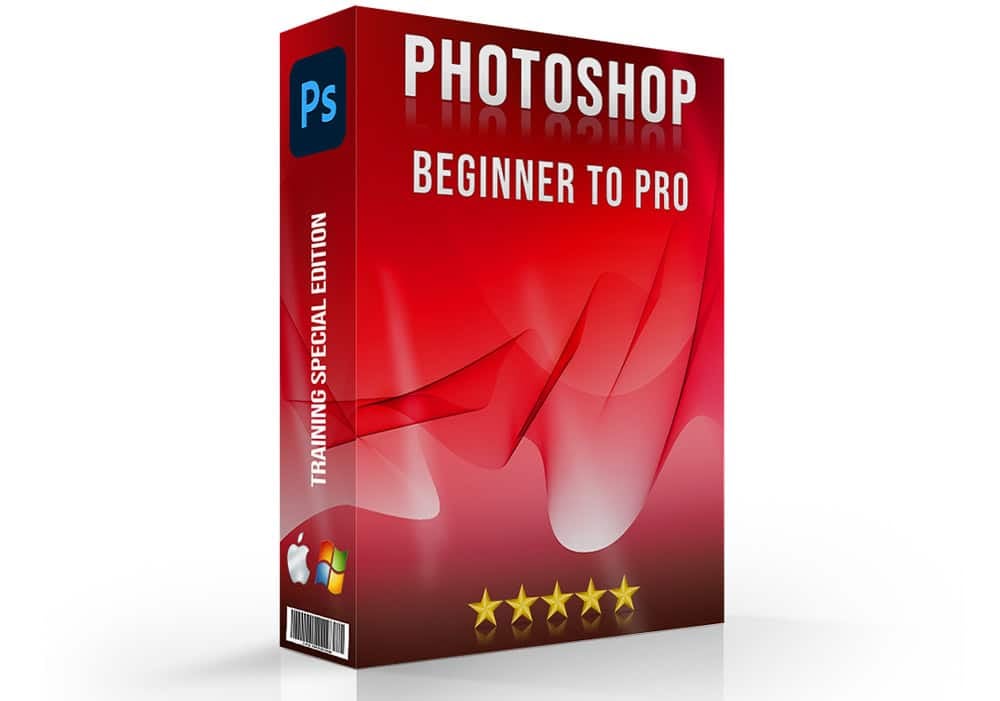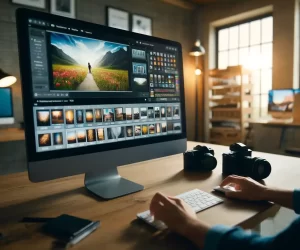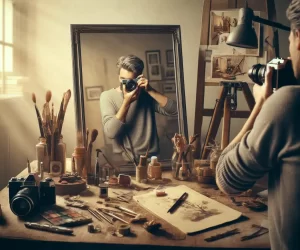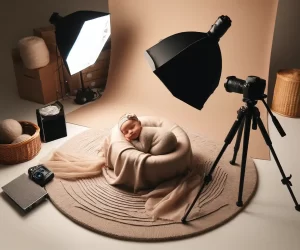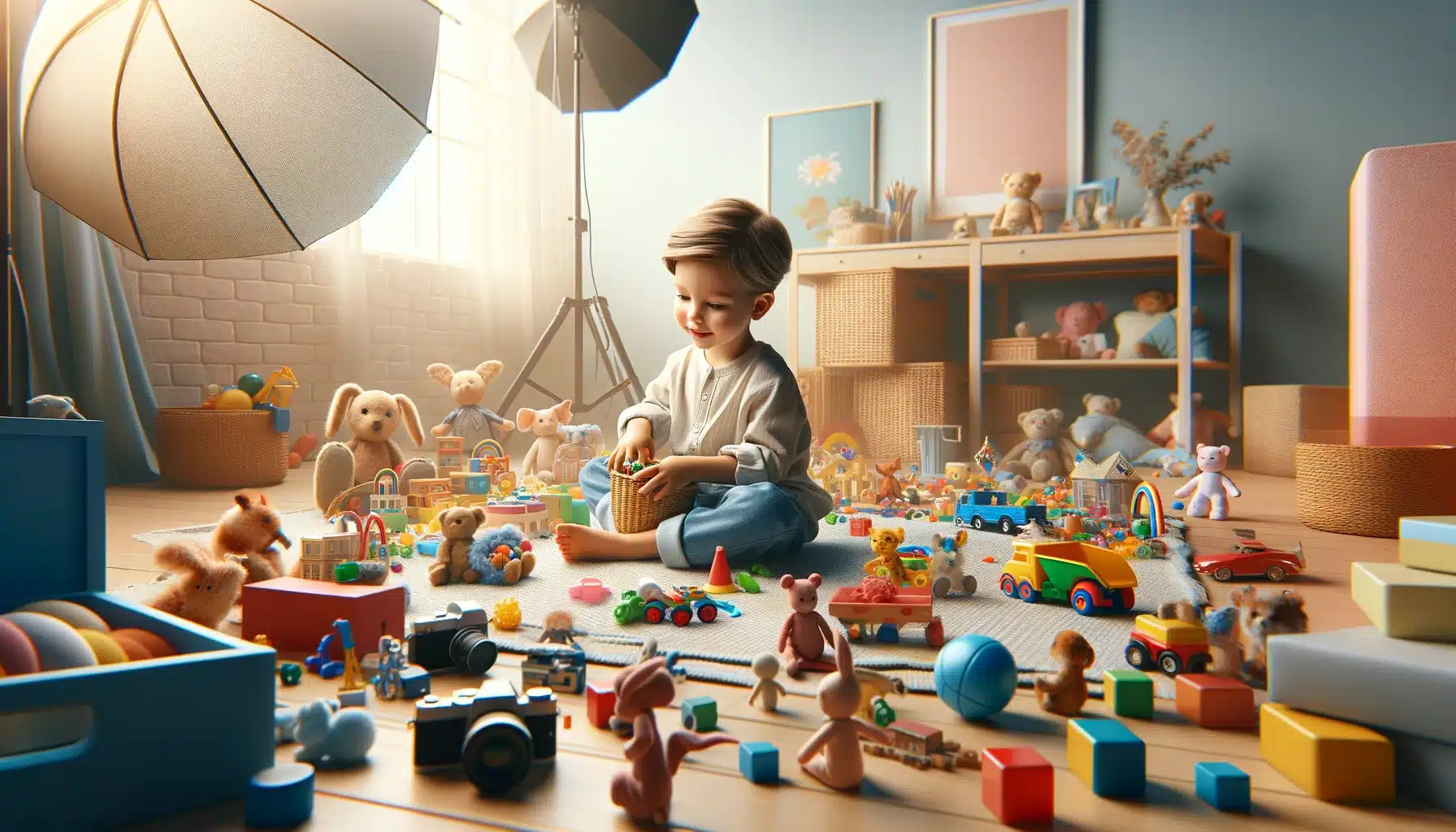
Introduction to Child Photography Ideas and Tips
Welcome to the world of child photography, where creativity meets magic! Here, we’ll explore a number of child photography ideas and tips that will transform your captures into timeless treasures. Whether you’re a novice or an experienced photographer, these child photography tips are crafted to make baby shoot session most memorable.
We’ll explore practical strategies and ideas for child photograph such as the use of props and thematic settings to create captivating results. Imagine capturing the sheer joy of a child playing with their favorite toy or seasonal elements like blooming flowers for a picturesque backdrop. Join us on this journey to unlock the secrets of creating stunning child portraits. You can also opt for some online training to learn more !
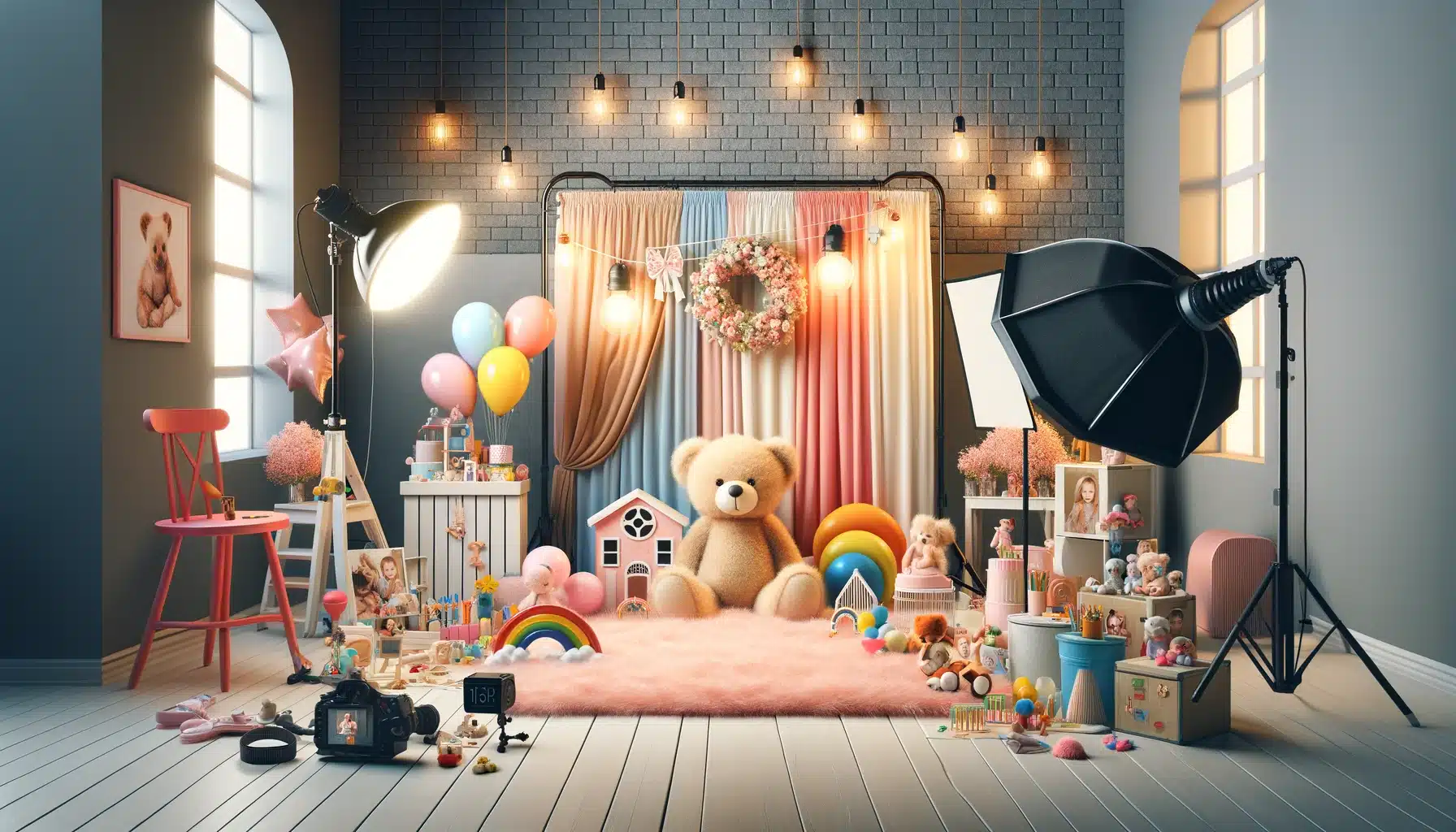
Table of Contents
Capturing Children's Attention: Practical Techniques for Engaging Photography
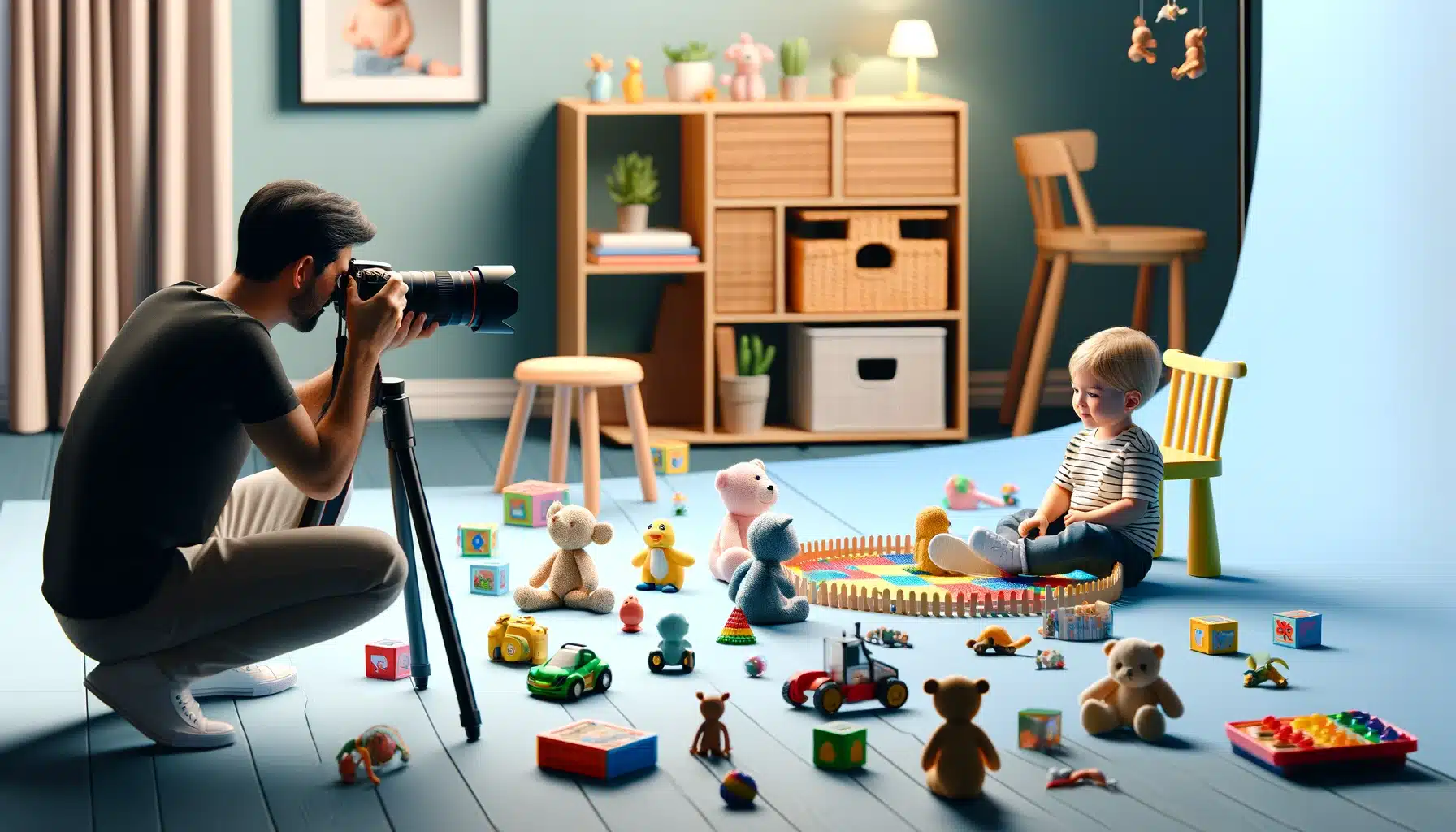
Photographers take help of different methods and photography ideas to grab kids’ focus during photoshoots. These child photography tips for capturing children’s moments not only work well but also result in captivating photos.
Playful Interactions
Engage in fun activities like peek-a-boo or use amusing playthings to capture genuine expressions. For instance, playing hide-and-seek behind the camera can lead to spontaneous and joyful reactions from the child. With love, you will get authentic and heartwarming kid’s photographs in motion.
Nature's Backdrops
Utilize outdoor settings or bring natural elements indoors for appealing backgrounds. A good backlighting is always required. Consider photographing the child surrounded by blooming flowers or sitting near a window with sunlight streaming in. It will create a whimsical and enchanting atmosphere in the photos.
Technological Engagement
Child’s portrait positions can be enhanced by utilizing gadgets like tablets or smartphones to showcase captivating images. Displaying vibrant and colorful photos on a tablet can pique the child’s curiosity and encourage his overall cooperation and expression during the shoot.
Dearest Activities
Capture candid occasions during the child’s most beloved activities to showcase their personality authentically. For instance, if a child enjoys painting, photograph them while painting. It can result in charming and meaningful photographs that reflect their passion and enthusiasm.
These child photography tips not only capture children’s moments but also make the photography experience enjoyable and memorable for both the photographer and the child. In addition, various other fashion photography techniques can lead to creative and captivating photographs that truly reflect the essence of childhood.
Essential Equipment for Child Photography
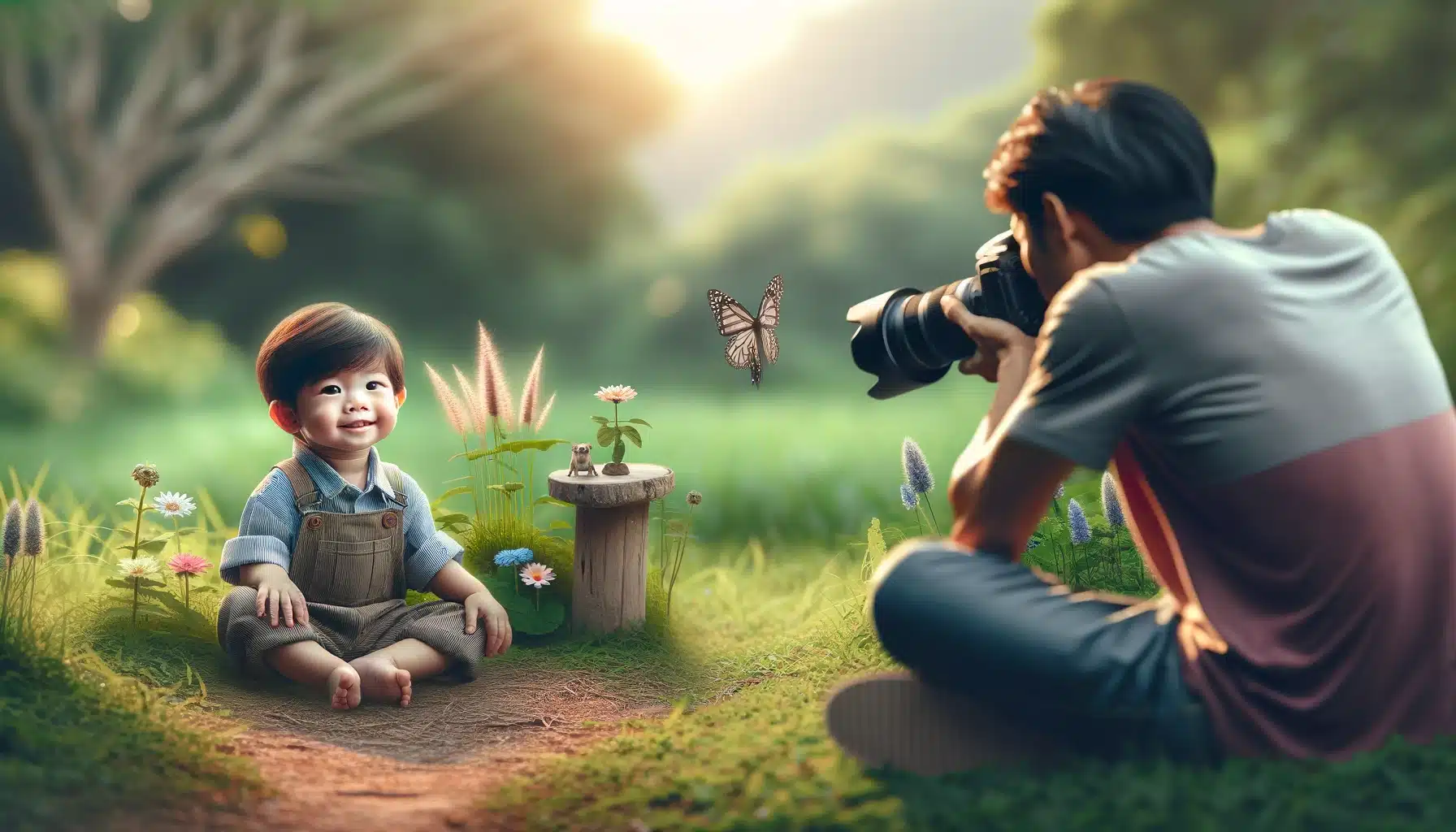
- Camera: Your camera is the most important tool for child photography. Look for a camera that is easy to use and has good quality. Remember to keep your camera charged and ready for the next shoot.
- Lens: The lens on your camera acts like its eyes, helping you capture a clear and beautiful photo. For child photography, a lens with a wide aperture is ideal for creating stunning shots with blurry backgrounds.
- Lighting: Good lighting is essential for taking great photos of children. Natural light is often best for a shot, so try to take shot near windows or outside during the day. If you're indoors, consider using a softbox or reflector to control the light and avoid harsh shadows.
- Tripod: A tripod is useful for keeping your camera steady, especially in low-light situations or when taking family photos. It ensures that your pictures turn out sharp and clear every time.
- Batteries: Always carry spare batteries for your camera to avoid running out of power halfway through a photo session. Children can be unpredictable, so it's important to be prepared for long shoots.
- Camera Bag: A durable camera bag is essential for protecting your equipment while on the move. Choose one that is well-padded and has compartments to keep everything organized and safe.
| Equipment | Description | Importance | Example |
|---|---|---|---|
| Camera | Primary tool for capturing photos | Essential | Canon EOS Rebel |
| Lens | Determines focal length and aperture | Crucial | 50mm f/1.8 |
| Lighting | Illumination source for photos | Vital | Softbox |
| Tripod | Provides stability for camera | Useful | Manfrotto MT190X |
| Memory Cards | Storage for captured photographs | Necessary | SanDisk Extreme |
| Batteries | Power source for camera | Essential | Rechargeable AA |
| Camera Bag | Protection and organization for gear | Important | Lowepro Fastpack |
| Props | Objects used to enhance photos | Creative Element | Stuffed Animals |
Child Photography Ideas and Tips : Best Settings
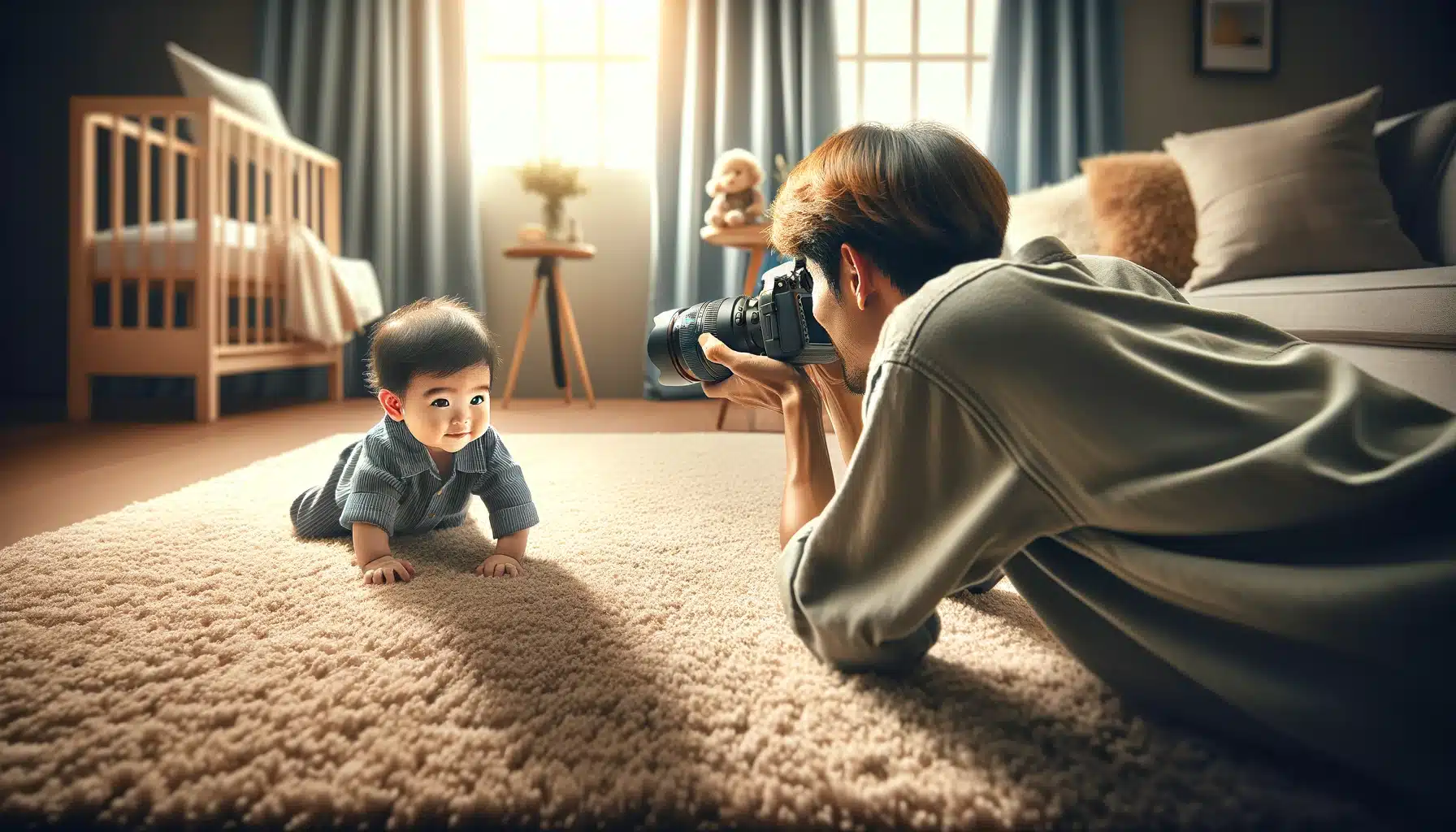
When it comes to child photography, choosing the right setting plays a crucial role in creating captivating snaps. Here are some simple child photography ideas and tips for the best settings to inspire your stances:
Natural Light Settings
Position the child near a window to benefit from soft, diffused natural light. This creates a flattering and gentle illumination for portraits. If possible, utilize outdoor spaces like gardens or parks for vibrant and dynamic backgrounds. The natural elements add depth and interest to the subject.
In fact, photography lighting is an art and once you learn it well, you can create magic.
Comfortable and Familiar Environment
One of the most important child photography tips is to shot a picture of the children in familiar and cozy settings during the day within their home environment. This helps them feel relaxed and natural, resulting in more authentic expressions. You can also improve the baby’s shoot session by searching various creative child photography themes for home suggestions on the internet. Photograph them in their favorite spots at home, such as their bedroom, playroom, or backyard. These locations add a personal touch to the images.
Playful and Interactive Poses
Encourage children to engage in playful activities, smile or play games for action-packed shots such as jumping on a bed, playing with bubbles, or chasing bubbles outdoors. These shots often reflect genuine emotions and interactions.
Playthings and Accessories
Incorporate gears that reflect the child’s hobbies, interests, or personality. For example, a dearest toy, a musical instrument, or a themed costume for imaginative play. Use minimalistic photography techniques to add a touch of style and charm to the subject.
| Setting | Pose Ideas |
|---|---|
| Natural Light Settings | Utilize window light for soft illumination or outdoor spaces for vibrant backgrounds. |
| Comfortable Environment | Capture children in familiar and cozy home settings or their preferred spots for a personal touch. |
| Playful Positions | Encourage action shots like jumping or playing games, as well as candid times for genuine emotions. |
Ideas for Photographing Children at Home: Using the Right Lenses
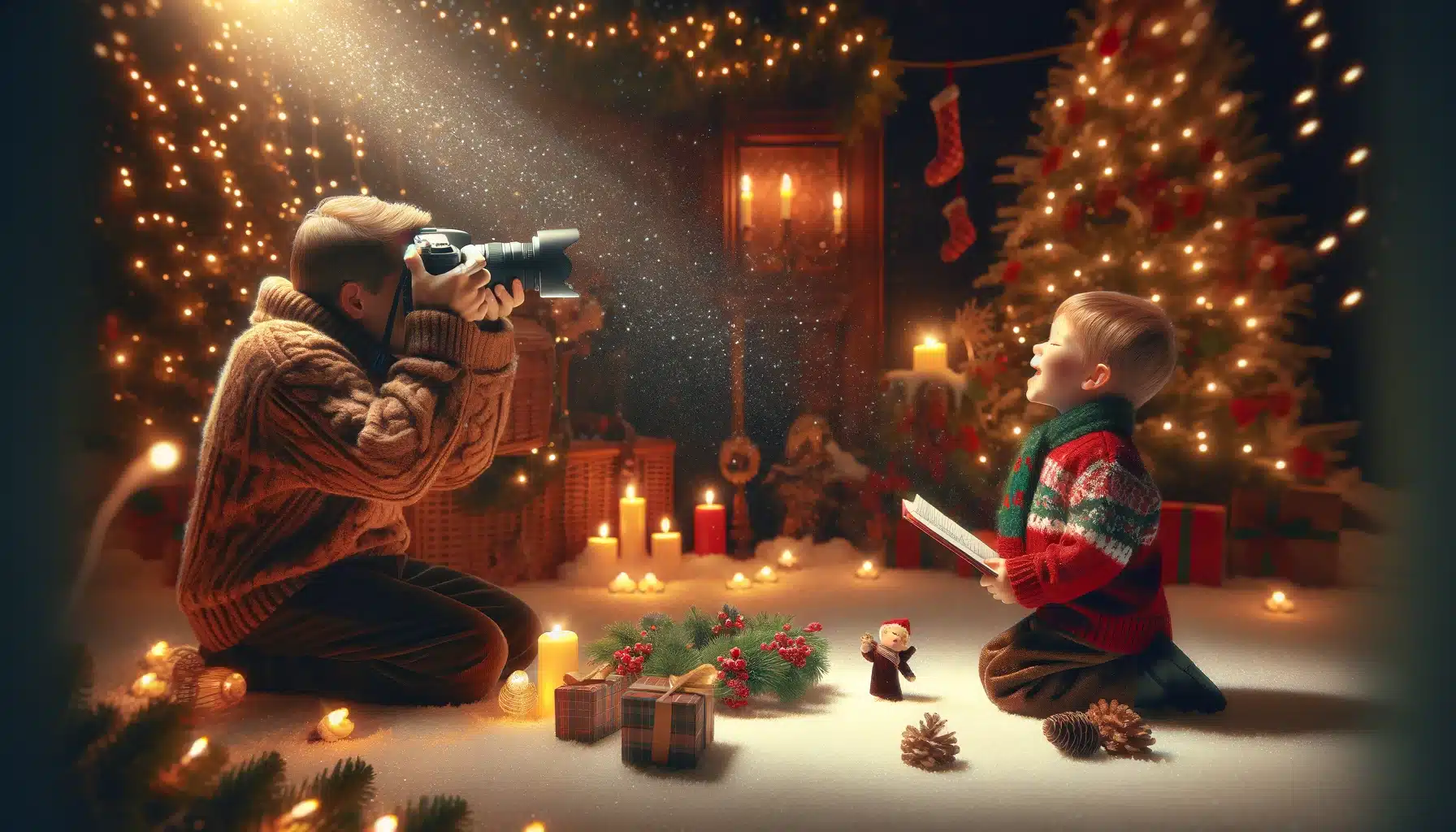
When photographing children at home, selecting the appropriate lenses can significantly impact the quality and style of your retakes. In less time, you will be able to produce more. Here are some practical child photography tips and ideas for using different types of lenses to capture stunning photos of children in their familiar environment:
Prime Lenses
Prime lenses with fixed focal lengths, such as a 50mm or 85mm, are excellent choices for child photography at home. These lenses offer wide apertures, allowing you to achieve beautiful background blur (bokeh) and sharp focus on the child’s or newborn’s expressions and details. Use prime lenses for intimate portraits or close-up shots that highlight the child’s personality and emotions.
Zoom Lenses
Versatile zoom lenses, like a 24-70mm or 70-200mm, provide flexibility in framing and composition. They are ideal for capturing a range of moments, from playful interactions to candid expressions, without needing to change lenses frequently. Zoom lenses offer convenience and adaptability, making them suitable for various child photography ideas execution at home.
Macro Lenses
Macro lenses excel in capturing intricate details and tiny subjects up close and for macro photography. When photographing children at home, a macro lens can be used to capture small gestures, delicate features, or beloved toys with remarkable clarity and precision. This lens type adds a unique perspective to your child photography, focusing on the minute elements that make childhood special.
Telephoto Lenses
Telephoto lenses, like a 100-400mm, provide reach and magnification, making them suitable for capturing distant or action-packed times at home. Use telephoto lenses for photographing outdoor play, sports activities, or spontaneous expressions from a distance while maintaining image clarity and detail.
By utilizing the right lenses based on your child photography ideas and tips, parents can a divedeveloprse portfolio of captivating snaps. It documents the beauty and essence of childhood at home. Experimenting with different lenses allows you to explore creative possibilities and capture memorable with authenticity and style.
How to Edit a Baby Shoot Photo? Expert Advice
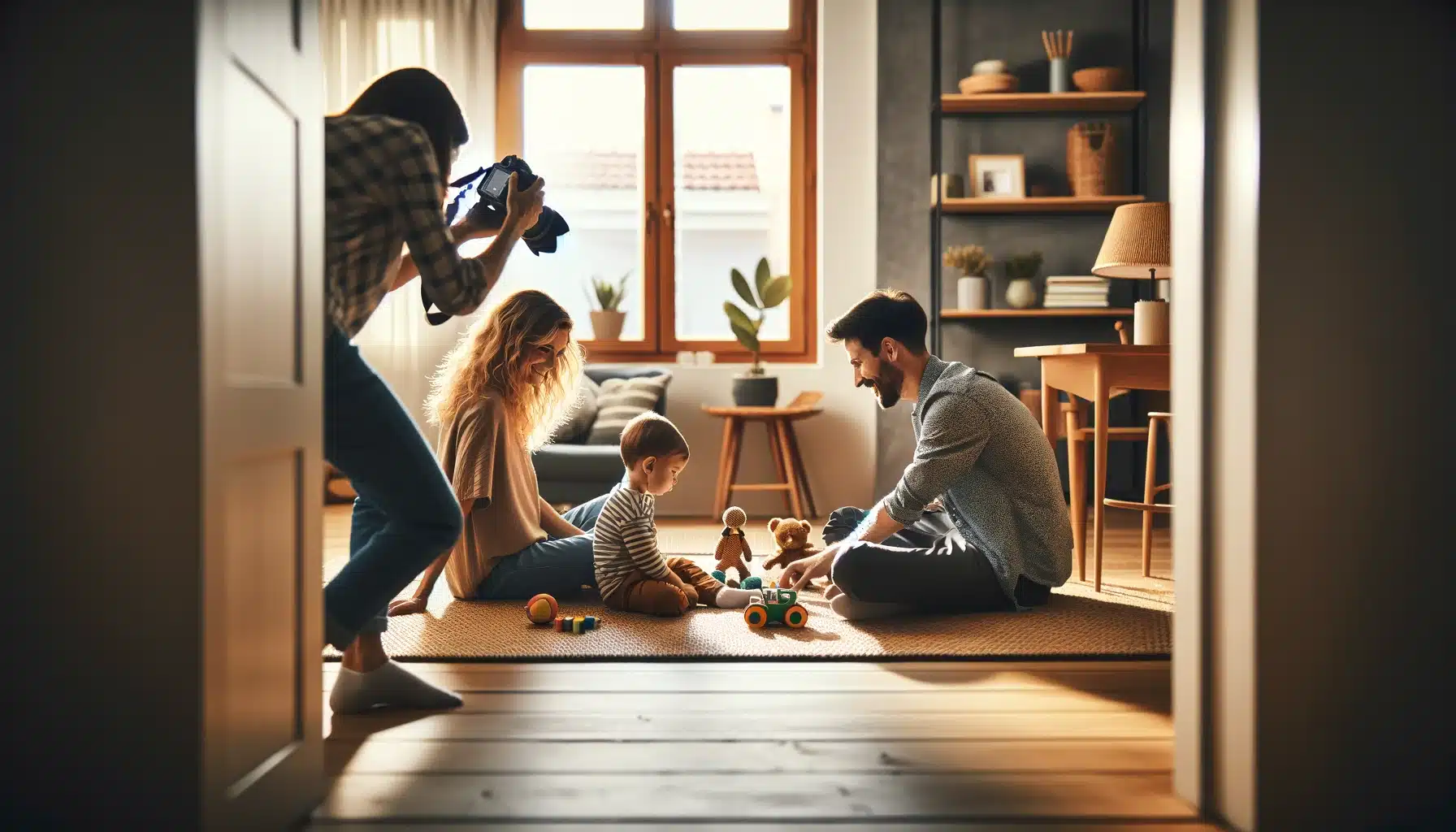
Editing baby shoot retakes involves enhancing the photo while preserving their natural charm.
Here are some practical tips and real-life examples for editing baby photos:
1. Adjust Exposure and White Balance
Use editing software to adjust exposure and white balance for a balanced and natural look. It creates stunning portraits which everyone would cherish forever. For example, brightening shadows can bring out details in a baby’s features without overexposing the image.
2. Enhance Colors
Enhance colors subtly to make the photos vibrant yet realistic. Avoid overly saturated colors that may look unnatural. For instance, enhancing the soft hues of a baby’s outfit or the natural tones of their surroundings can produce a pleasing color palette. You can also replace the colors in the baby’s shot for creating good family shots of your baby.
3. Soften Skin and Reduce Blemishes
Use a softening tool to smooth the baby’s skin and reduce any blemishes or redness. Be careful not to overdo it, as maintaining the baby’s natural skin texture is important. For example, you can gently smooth the skin while retaining the baby’s adorable dimples or freckles.
4. Crop and Straighten
Crop the snaps to remove distractions and focus on the baby’s expressions. Straighten the composition if needed for a clean and professional look. Cropping a photo to highlight the baby’s joyful expression during playtime or straightening the horizon in outdoor sessions.
5. Enhance Details
Parents can enhance details like eyes, lashes, and tiny fingers to make the photos more captivating. Be careful not to over-sharpen, as it can create unnatural-looking textures such as enhancing the sparkle in a baby’s eyes or the delicate lines on their hands and feet. Also try to remove any shadows in the photo.
By using various editing techniques and watching some other tutorials, you can enhance the beauty of baby shoot images while maintaining their natural charm and innocence. If you are interested to learn in a depth, there is an extremely useful tool available by Adobe for letting you create and design with professionalism. Parents should check it to create amazing family and baby portraits!
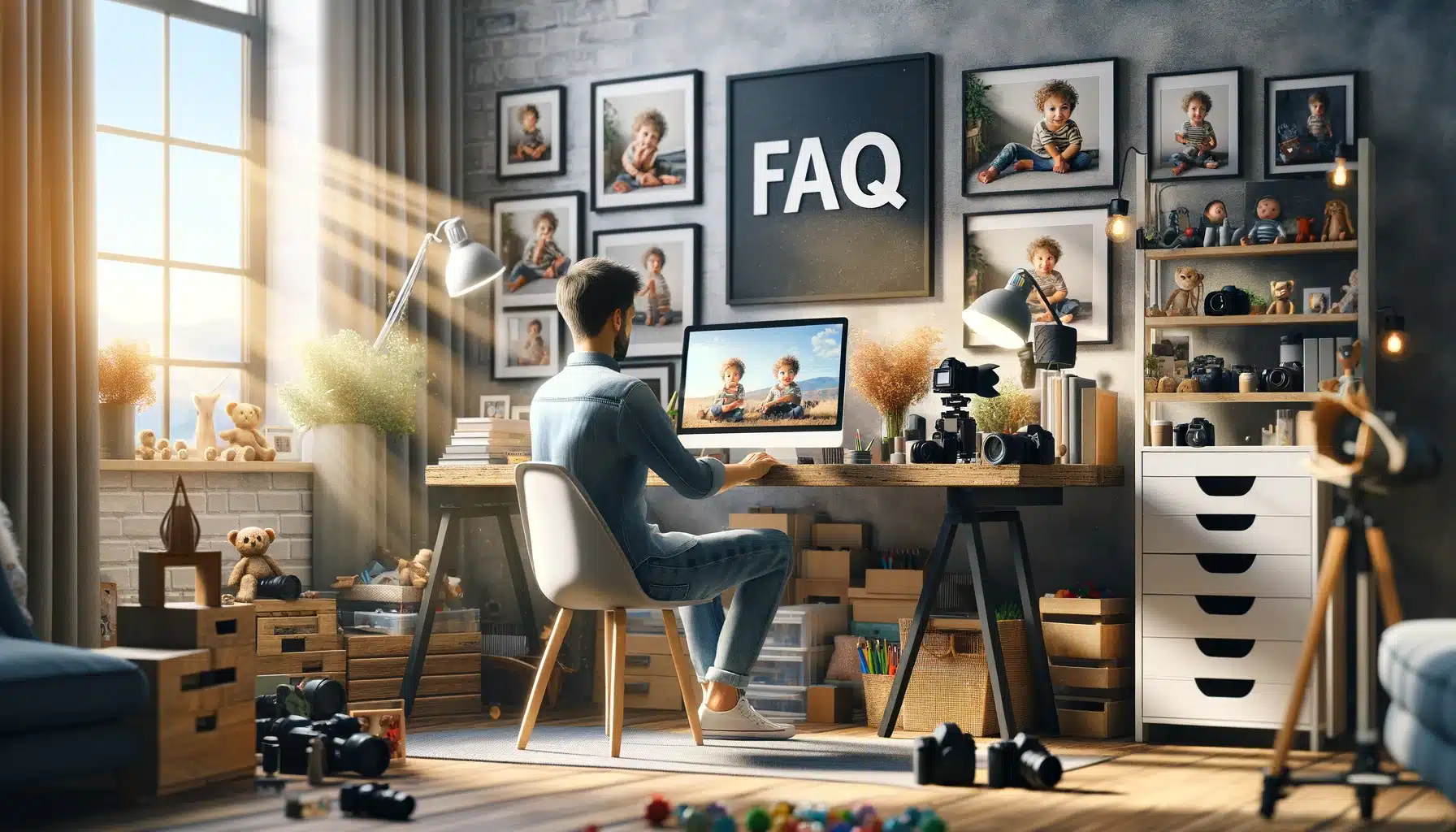
FAQ for Child Photography Ideas and Tips
How can I make sure my child smiles naturally in photos?
Creating a fun and interactive environment during the photo session can encourage natural smiles from your child. Use play and activities they enjoy, like their favorite toy or playing a game, to capture genuine expressions.
What if my child doesn't like taking photos?
It’s important to make the photo session enjoyable for your child. Choose a location they like, involve them in the planning process, and keep the atmosphere relaxed and positive to help them feel comfortable in front of the camera.
Can I include other family members in the child's photo session?
Yes, involving other family members can add a special touch to the photos. Siblings, parents, or grandparents can join in for group shots or candid moments, creating great memories for the whole family.
How long does a typical child photo session last?
The duration of a photo session can vary based on the child’s age, mood, and attention span. Generally, sessions last around 1-2 hours to allow enough time for different positions, settings, and breaks as needed.
Can I get digital copies of the photos for my family?
Absolutely! Digital copies of the edited photos are usually provided, allowing you to share and preserve these special occasions with your family and loved ones.
How soon can we expect to receive the final photos?
The turnaround time for receiving the final edited photos varies but is typically within 1-2 weeks after the photo session. This allows for thorough editing and ensures you receive high-quality images to cherish for years to come.
Conclusion
The strategies we’ve discussed are highly effective for capturing captivating child photographs. These techniques not only enhance visual appeal but also elicit genuine emotions from young subjects, resulting in emotionally resonant photographs. For instance, during a recent photo shoot, I used interactive sessions, meaningful playthings, and thematic settings. This approach allowed me to capture authentic time that reflected the kid’s personality and emotions.
To boost your skills and create stunning child portraits that resonate with viewers, I urge you to join our courses. Our photoshop course and Lightroom course provide thorough training in editing and creative composition. Enroll now and start making unforgettable memories through your camera!
Have a nice photoshoot!
- Capturing childhood moments
- Child photography techniques
- Photography composition techniques
- Photography tips for kids
- Portrait photography
Course
Light Effect Photoshop
Lightroom Course 2024
Adobe Photoshop Course
Photo Editing Course
Get the latest version of Photoshop & Lightroom


Download Your Free Guide Now!
Discover the secrets of photography with our printable guide! Master essential techniques like aperture, shutter speed, and ISO to create stunning images. Get your free printable PDF now and start turning your snapshots into masterpieces!

